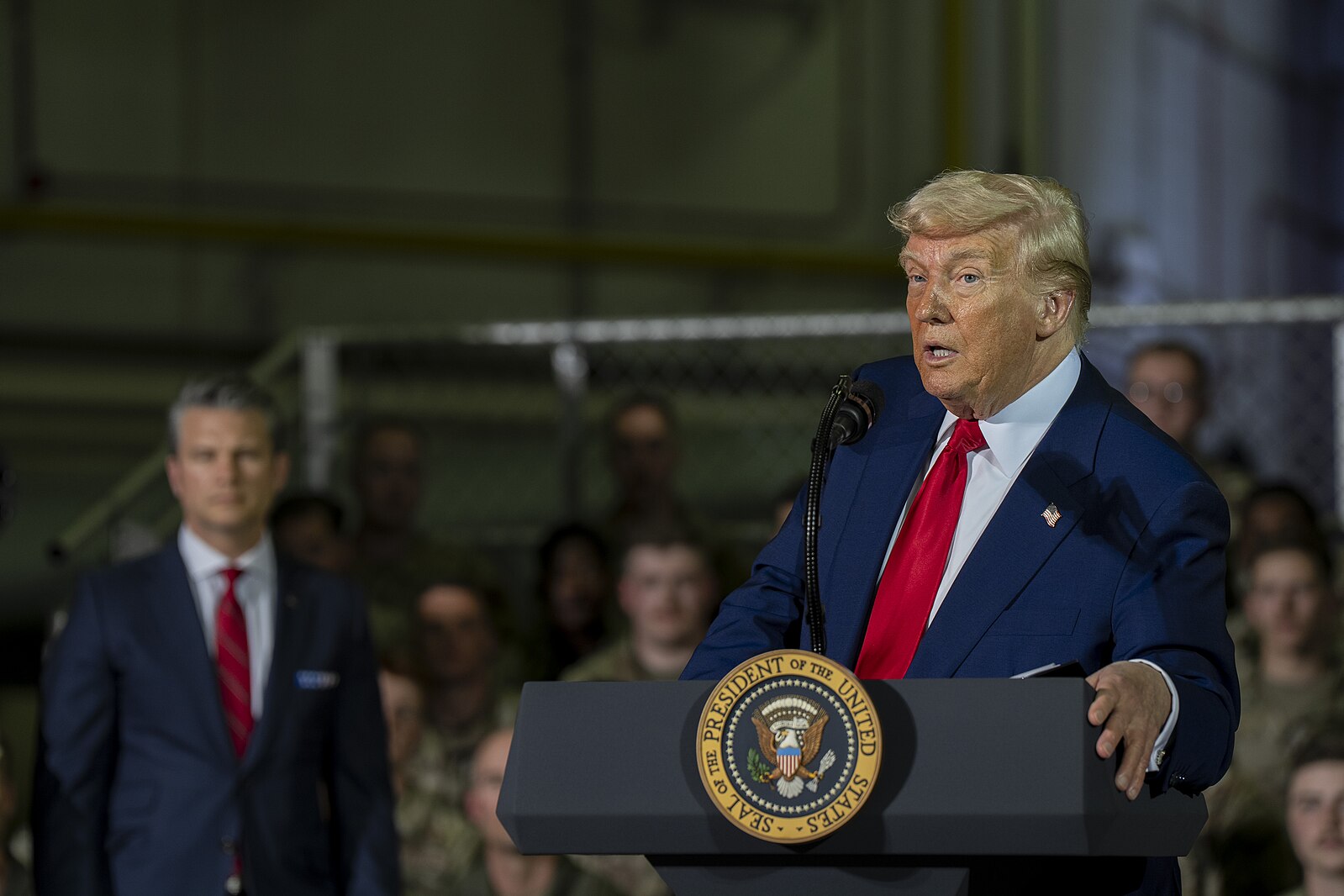Trump’s Talk of Nuclear Testing Is Terrifying
The uproar triggered by U.S. President Donald Trump’s Oct. 30 announcement to “start testing nuclear weapons” subsided following a statement from U.S. Energy Secretary Chris Wright.
He clarified on Nov. 2 that the United States was considering “system tests,” which involve “noncritical explosions,” stressing that these are not nuclear detonations. However, anxiety over Trump’s volatile stance on nuclear issues persists. The episode exposed three profound concerns that demonstrate the nuclear risk inherent in his leadership.
First, the inclination to resume nuclear explosive testing isn’t new to the Trump administration. During Trump’s first presidency, some pundits within his administration openly advocated for resuming tests. At the time, some even proposed “un-signing” the Comprehensive Nuclear Test Ban Treaty to remove any legal barrier to doing so.
The 2018 Nuclear Posture Review (NPR) formulated during his first term stated: “The United States will not resume nuclear explosive testing unless we find it necessary to ensure the stability and effectiveness of our nuclear arsenal.” While the main policy line appeared to oppose immediate resumption, this statement left the door open for future testing. This context is relevant to understanding Trump’s recent comment during an interview with CBS. When asked why the United States needs to test nuclear weapons, Trump simply replied, “Because you have to see how they work.”
Second, impulse overrules strategic national interest. Trump appears driven by an impulse to overpower U.S. opponents, often with little regard for actual long-term national interests. In his social media post, Trump claimed to have instructed the Pentagon to start testing nuclear weapons “on an equal basis” with Russia and China. He later told CBS: “Russia’s testing and China’s testing. We’re the only country that doesn’t test, and I don’t want to be the only country that doesn’t test.”
This argument disregards a critical fact: The United States has already conducted more than 1,000 nuclear tests and possesses the most extensive data on nuclear explosive effects among nuclear states. It is unequivocally in its strategic interest to maintain global restraint against nuclear testing for as long as possible, precisely because of this technical edge.
However, this strategic cost-benefit analysis appears irrelevant to Trump’s impulse to dominate adversaries. This is reminiscent of his 2018 social media post directed at North Korean leader Kim Jong-un, in which Trump bragged that his own nuclear button “is a much bigger and more powerful one than his.”
Third, the danger of the nuclear one-man show looms. A solitary, unchecked decision-making process can be catastrophic in the nuclear realm. Trump’s Oct. 30 post appears to have been made without consulting his staff. He may have misinterpreted Russia’s test of the Burevestnik, a nuclear-powered cruise missile, as an actual nuclear explosive test.
Following his announcement, a necessary process of internal consultation — involving staff from the departments of defense and energy — must have immediately begun to rectify his overstep.
Secretary Wright’s clarification shows that a minimum level of checks and balances at least worked. However, this does not dispel the anxiety over nuclear decision-making under Trump. A stark difference emerges between Trump 1.0 and Trump 2.0.
Under the first Trump presidency, nuclear policy was formulated through structured discussion and coordination among nuclear experts; the 2018 NPR was a professional policy declaration. As for Trump 2.0, the President is seemingly surrounded by yes-men, with professional input often sidelined in favor of personal loyalty. This erosion of professionalism poses an enormous existential risk in the nuclear domain, which is arguably the area that carries the biggest danger of all.
Hopefully, for now, this episode to resume the testing of nuclear weapons will soon be truly over. The damage, however, has already been done. In an unnecessary and dangerous tit-for-tat escalation, on Nov. 5, Russia’s President Vladimir Putin instructed his staff to submit proposals on the possible first steps for nuclear weapons tests. This is a consequence of Trump’s initial move stemming from a misinterpretation. The confluence of these factors forces me to conclude that the nuclear risk has demonstrably risen under the current U. S. president.
About the Author
Mitsuru Kitano is a senior diplomat with over four decades of experience in foreign affairs. He currently serves as an executive adviser at the Council of Local Authorities for International Relations, having previously held the role of ambassador to Ireland from 2019 to 2022. From 2014 to 2019, he represented Japan as its permanent representative to international organizations in Vienna. He has a robust background in disarmament and nonproliferation, serving as director-general for disarmament at Japan’s Ministry of Foreign Affairs (MOFA) and in various other high-level positions within MOFA, including deputy director-general for Asian and Oceanian affairs.
Disclaimer: The opinions articulated above represent the views of the author(s) and do not necessarily reflect the position of the Asia-Pacific Leadership Network or any of its members. APLN’s website is a source of authoritative research and analysis and serves as a platform for debate and discussion among our senior network members, experts, and practitioners, as well as the next generation of policymakers, analysts, and advocates. Comments and responses can be emailed to apln@apln.network.
Image: President Donald Trump delivers remarks to troops alongside Secretary of Defense Pete Hegseth, Michigan Governor Gretchen Whitmer, Michigan House Speaker Matt Hall, Michigan Senator Aric Nesbitt, Michigan National Guard Adjutant General Maj. Gen. Paul D. Rogers, and Michigan National Guard Assistant Adjutant General Brig. Gen. Rolf M. Kramer at Selfridge Air National Guard Base, Harrison Township, Mich., April 29, 2025. (DoD photo by U.S. Navy Petty Officer 1st Class Alexander Kubitza)
This article was published in The Korea Times on 13 November 2025. You can find the original article here.

